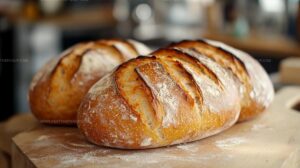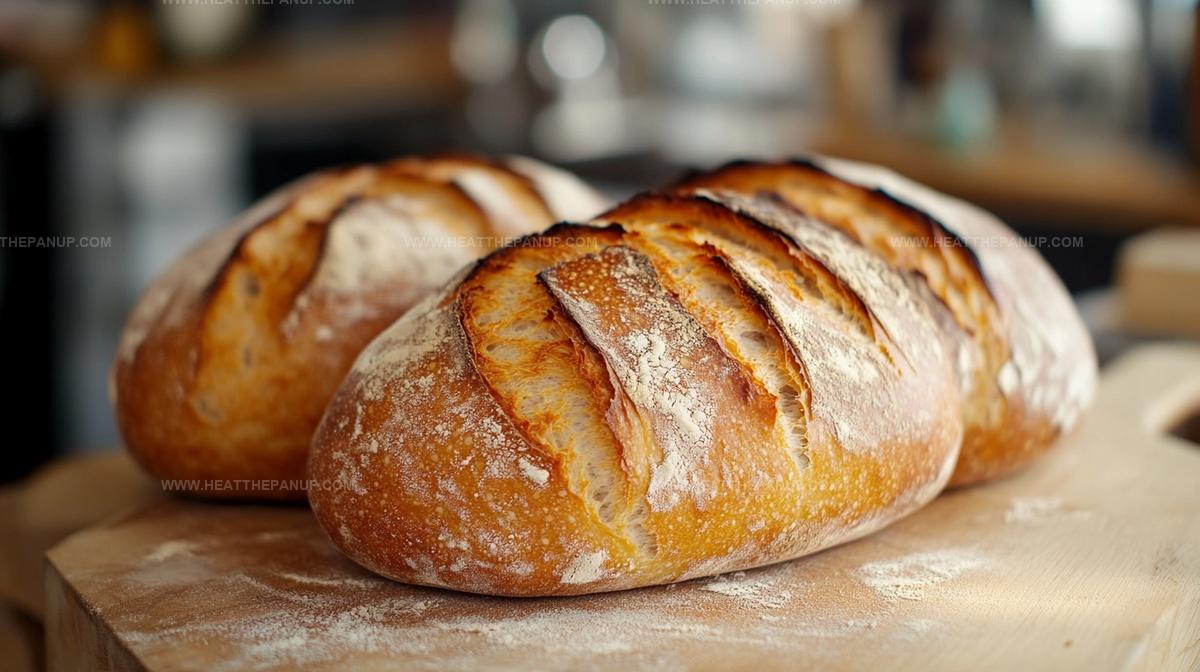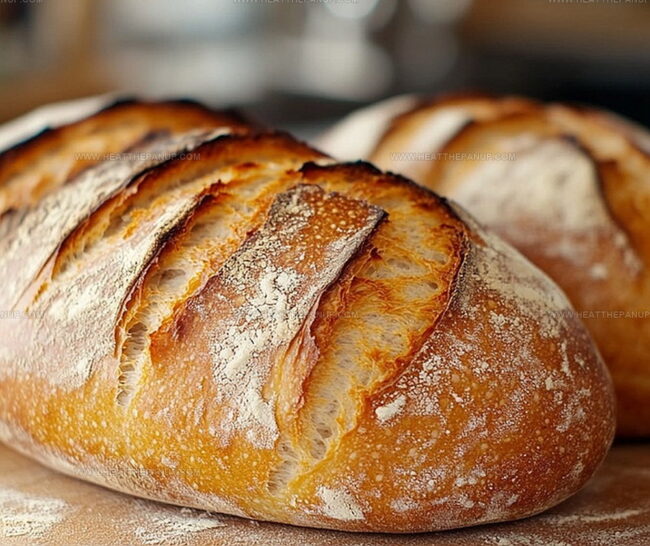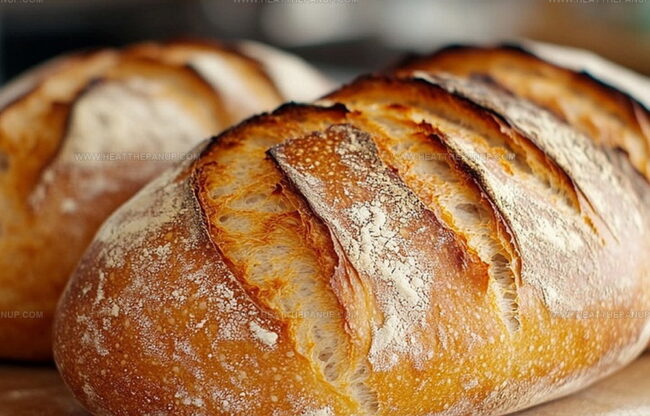The Most Scrumptious Quick German Bread Recipe Ever Made
Crafting a delightful quick german bread opens up a world of rustic culinary magic.
Hearty aromas will soon fill your kitchen with warmth and comfort.
Generations of bakers have perfected this simple yet remarkable technique.
Soft, golden crusts promise a delectable experience that connects tradition with modern cooking.
Minimal ingredients mean anyone can master this delightful recipe with confidence.
Fresh bread feels like a personal triumph waiting to happen.
You’ll feel like a kitchen hero when this gorgeous loaf emerges from the oven, ready to impress and satisfy.
Why Quick German Bread Is a Staple
Effortlessly Craft Authentic German Bread: Quick, Simple, and Delightful
Quick German Bread Ingredient Guide
Bread Base:Liquid Ingredients:Preparation Extras:How to Bake Quick German Bread
Step 1: Awaken The Yeast
Grab a spacious mixing bowl and pour in water.
Add sugar and dried yeast.
Stir the mixture gently until everything dissolves completely.
Watch the liquid transform into a frothy, bubbly wonderland that signals your yeast is ready to work its magic.
Step 2: Create Dough Base
Pour sunflower oil into the activated yeast mixture.
Sift flour into the bowl gradually:Mix ingredients until a soft, slightly sticky dough forms.
Avoid overmixing to keep the texture tender.
Step 3: Let Dough Rise
Cover the bowl with a clean kitchen towel.
Place the bowl in a warm corner of your kitchen away from drafts.
Allow the dough to expand and rise for approximately one hour until it doubles in volume.
Step 4: Punch Down And Rest
Gently stir the risen dough for around 30 seconds to release trapped air bubbles.
Cover and let it rest for another half hour to develop deeper flavor.
Step 5: Shape The Loaf
Dust your countertop with flour.
Roll the dough into a rectangular shape.
Fold the dough over itself to create delicate layers.
Let it relax for 10 minutes.
Transform the dough into your desired shape – loaf, round boule, or individual rolls.
Step 6: Prepare For Baking
Crank the oven to 230°C.
Line a baking tray with parchment paper.
Transfer your shaped dough onto the tray.
Use a sharp knife to make decorative slashes across the top.
This helps the bread expand and creates a beautiful crust.
Step 7: Bake To Perfection
Slide the tray into the hot oven.
Bake for 30-40 minutes until the crust turns a gorgeous golden brown.
Test doneness by tapping the bottom – a hollow sound means your bread is ready.
Step 8: Cool And Enjoy
Transfer the bread to a wire rack.
Let it cool for at least 15 minutes.
Slice and serve warm with butter, jam, or alongside hearty soups and stews.
Savor the delicious results of your baking adventure!
Tips for Quick German Bread Success
Store & Reheat German Bread Properly
Pair With Quick German Bread
German Bread Style Variations
FAQs
Yeast activation helps ensure the yeast is alive and ready to help the dough rise. By dissolving it in warm water with sugar, you create the perfect environment for yeast to become active and start producing carbon dioxide bubbles that make bread light and fluffy.
A properly risen dough will double in size and look puffy and soft. When you gently press the dough with your finger, it should slowly spring back, leaving a small indentation. If the dough doesn’t rise, your yeast might be old or the environment was too cold.
Folding the dough helps develop gluten, which gives bread its structure and texture. By gently folding the dough over itself, you create layers that trap air and help the bread become more elastic and have a better rise during baking.
Slashing the bread allows steam to escape during baking and helps control how the bread expands. These decorative cuts also create a beautiful pattern on the crust and help the bread achieve an even, attractive shape while preventing uneven rising.
Print
Quick German Bread Recipe
- Total Time: 2 hours 25 minutes
- Yield: 4 1x
Description
Hearty quick German bread brings rustic comfort straight from Bavaria’s kitchens. Simple ingredients blend seamlessly, creating a delightful loaf that connects you with authentic german culinary traditions.
Ingredients
Main Ingredients:
- 500 grams (17.6 ounces) flour
- 350 milliliters (11.8 fluid ounces) water
- 25 milliliters (0.8 fluid ounces) sunflower oil
Leavening and Sweetening Agents:
- 8 grams (0.28 ounces) dry yeast
- 1 tablespoon sugar
Dusting:
- Flour (extra for dusting)
Instructions
- Awaken the yeast by whisking warm water, sugar, and dry yeast in a spacious mixing bowl. Allow the mixture to rest for 5 minutes until a frothy, bubbly texture emerges, indicating active fermentation.
- Drizzle sunflower oil into the yeast mixture, then gently fold in flour using a sweeping motion. Continue mixing until a cohesive, slightly tacky dough develops, avoiding excessive manipulation.
- Drape a clean cloth over the bowl and position in a tranquil, warm environment. Let the dough expand and rise for approximately one hour, or until its volume doubles.
- Briefly deflate the risen dough with gentle stirring, redistributing internal gases. Return the cloth cover and permit another 30-minute relaxation period.
- Dust a clean work surface with flour and transform the dough into a rectangular shape. Create intricate layers by folding the dough onto itself, then pause for 10 minutes to allow gluten relaxation.
- Mold the dough into your preferred format – whether a rustic loaf, rounded boule, or individual rolls. Ensure smooth, even surface tension for optimal bread structure.
- Heat the oven to a scorching 230°C. Position the shaped dough on parchment-lined baking equipment and score decorative slashes across the surface. Bake for 30-40 minutes until a rich golden crust forms and the bread produces a hollow percussion when tapped.
- Extract the bread from the oven and transfer to a wire cooling rack. Allow 15-20 minutes of resting to complete the cooking process and stabilize internal moisture. Slice and serve alongside complementary accompaniments like butter or jam.
Notes
- Activate yeast precisely by using lukewarm water between 100-110°F to ensure optimal fermentation without killing the live cultures.
- Knead dough gently to develop gluten structure without overworking, which can create tough bread texture that feels dense and chewy.
- Experiment with alternative flour combinations like whole wheat, rye, or spelt for diverse nutritional profiles and unique flavor variations.
- Create a crispy crust by placing a shallow pan of water on the bottom oven rack during baking, generating steam that helps develop a golden, crackling exterior.
- Prep Time: 1 hour 45 minutes
- Cook Time: 30-40 minutes
- Category: Breakfast, Snacks
- Method: Baking
- Cuisine: German
Nutrition
- Serving Size: 4
- Calories: 190
- Sugar: 1 g
- Sodium: 0 mg
- Fat: 3.5 g
- Saturated Fat: 0.4 g
- Unsaturated Fat: 3.1 g
- Trans Fat: 0 g
- Carbohydrates: 36 g
- Fiber: 1 g
- Protein: 5 g
- Cholesterol: 0 mg




Angelina Wiles
Content Editor & Culinary Enthusiast
Expertise
Food Writing and Editing, Vegetarian and Vegan Cuisine, Baking and Pastry Arts, Sustainable Cooking Practices
Education
Portland Community College
Certificate in Culinary Arts
Focus: Emphasis on sustainable cooking practices, vegetarian cuisine, and food writing.
Oregon Culinary Institute
Diploma in Baking and Pastry Arts
Focus: Specialized training in artisanal baking, pastry techniques, and dessert presentation.
Angelina’s love for cooking started with handwritten family recipes and weekend trips to farmers’ markets around Portland. She followed her passion with a Certificate in Culinary Arts from Portland Community College, then perfected her sweet side with a Diploma in Baking and Pastry Arts at Oregon Culinary Institute.
Angelina believes recipes should feel like a conversation, not a science project. She’s all about helping readers trust themselves in the kitchen with simple steps, fresh ideas, and easy twists on classic meals.
When she’s not editing recipes, she’s baking bread, sipping coffee, or getting inspired by the changing seasons.